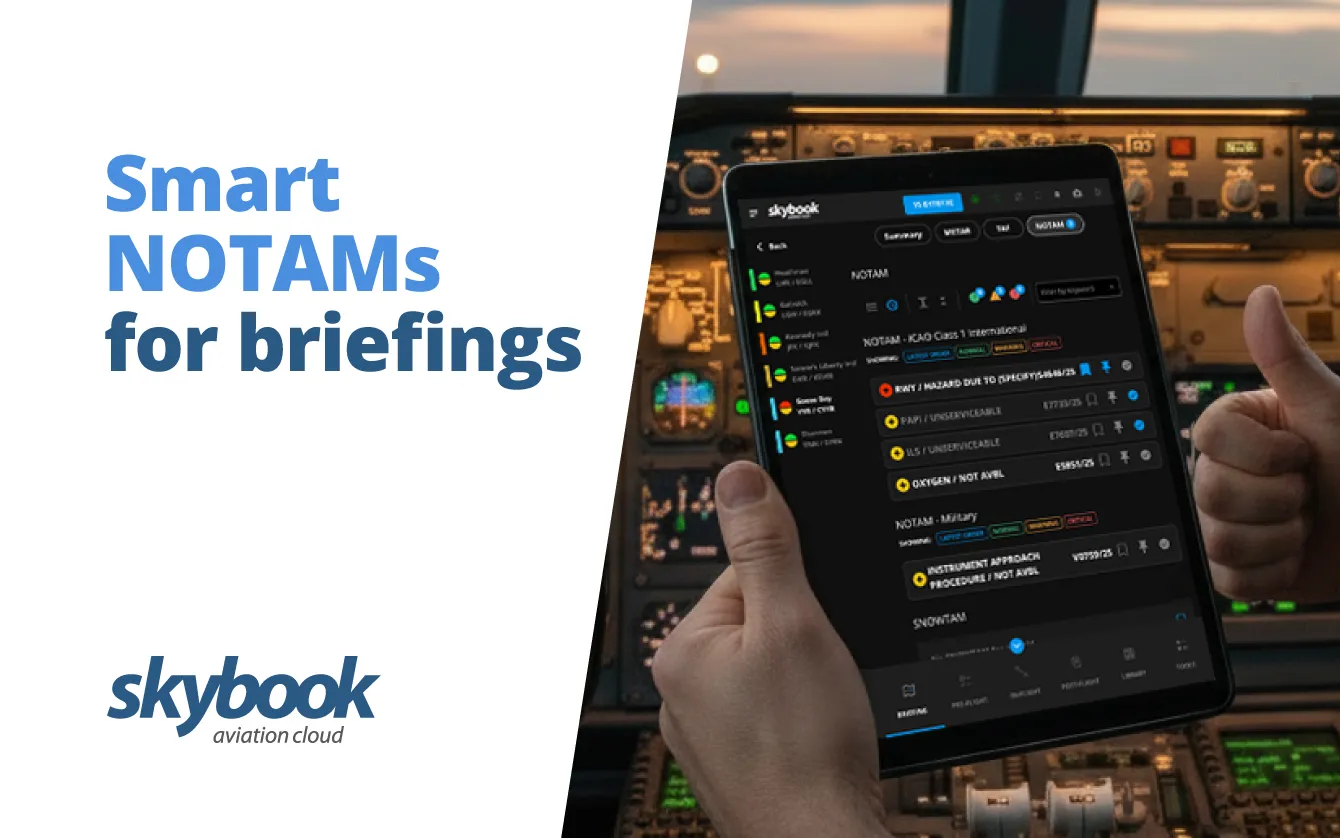
Smart NOTAMs for flight crew briefings
See our upcoming and previous aviation software webinars that may be of interest to you. We host online webinars every few months so be sure to check-in and see what is new...
Are you interested in learning why over 100 airlines are using our aviation software within flight operations and the pilots EFB on flight deck?
Taster transcript
skybook is a SaaS based product. It consists of a web-based ground portal. This is used by dispatchers, OCC, flight followers and operations teams.
The skybook EFB, is our tablet application. With over 130 different operators around the world, and that's thanks to the flexible way in which, we can fully configure skybook to meet even the most stringent of needs from any operator.
As a solution skybook is proven to help improve communication across departments, bringing teams together through collective ownership and access. It's proven to increase situational awareness on a global basis.
It improves safety and helps make faster decisions with more information available. It helps to review workloads and improve workflows, create connected solutions through integration.
It will automate previously labor intensive jobs and above all else, skybook helps to improve on time performance, playing a leading role in helping you to understand areas that can be improved to hit your emissions targets.
Thank you for spending the time to watch our webinars, if you have any questions about skybook, please don't hesitate to get in touch.